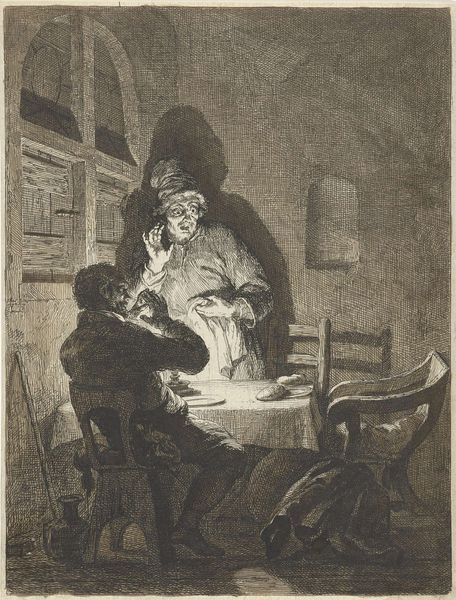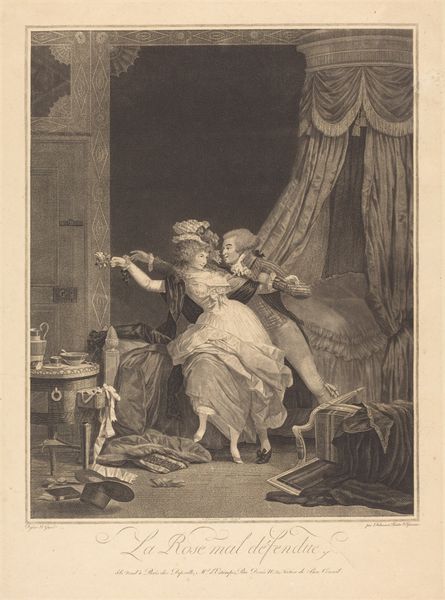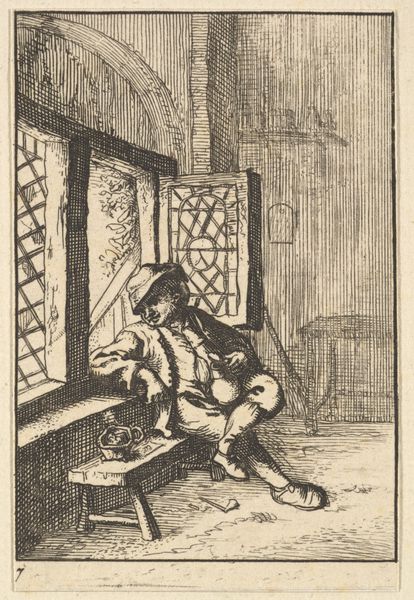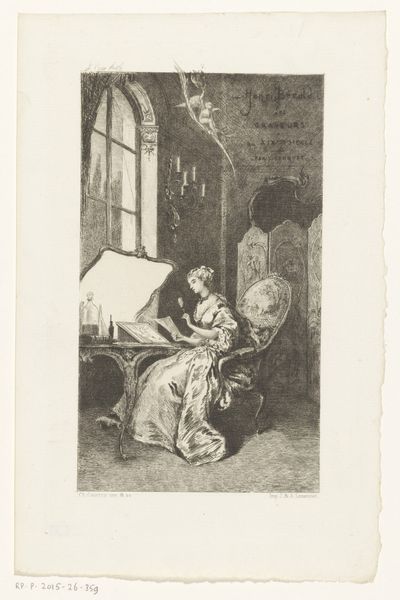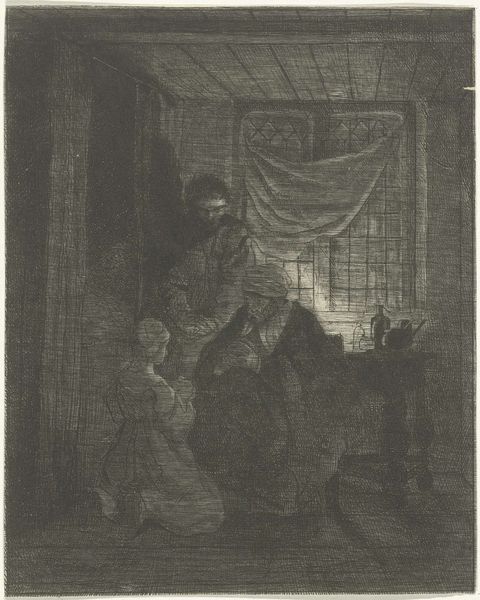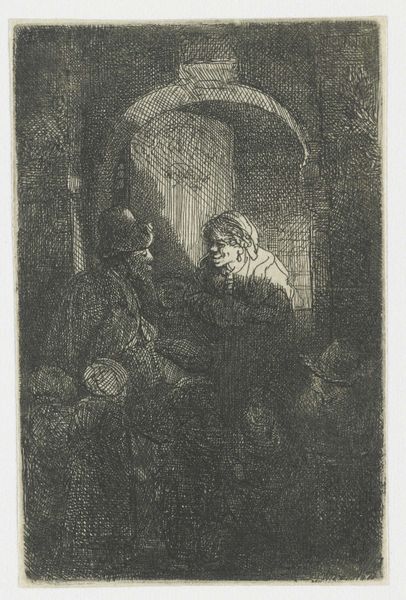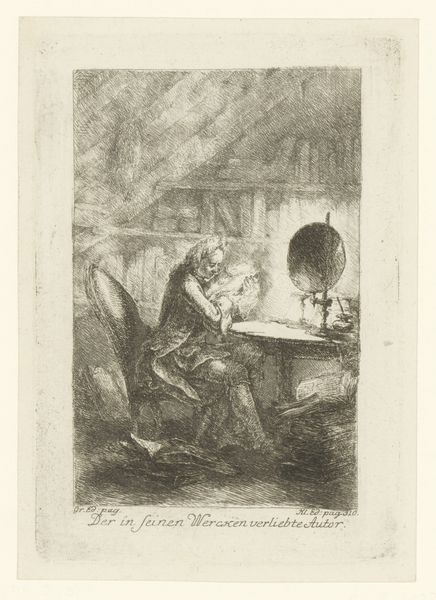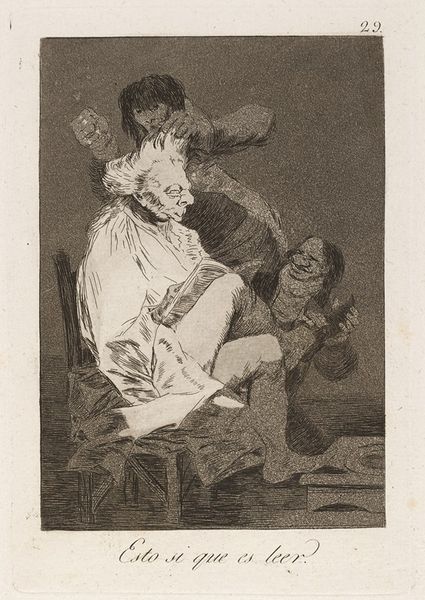
etching
#
portrait
#
narrative-art
#
baroque
#
etching
#
genre-painting
Dimensions: height 189 mm, width 145 mm
Copyright: Rijks Museum: Open Domain
Editor: So, this is "Maaltijd in Emmaüs" by Arnold Houbraken, dating sometime between 1670 and 1719. It's an etching, and the figures look quite dramatic, caught in this dimly lit space. The figure on the right seems really surprised, and it gives a very Baroque feel to the artwork. What significance might there be behind that figure’s expression? Curator: That startlement is precisely the point! Think of the narratives embedded within that reaction. "Maaltijd in Emmaüs," the Meal at Emmaus, often carries the cultural memory of sudden revelation. Don't you see how the Baroque love for drama underscores the moment Christ reveals himself to his disciples? The etching is rendered with a captivating interplay of light and shadow – chiaroscuro. That's key to visually representing that very instant of recognition and awe. Editor: Right, that revelation…it's like the light itself is radiating from him. And I’m guessing the way the shadows obscure other elements is deliberate, too? Curator: Absolutely! The light could be a conscious decision by Houbraken to illuminate not just the physical space but the disciples’ dawning spiritual awareness. Shadows become symbols of their previous ignorance. Can you imagine how someone in the 17th century, deeply steeped in religious iconography, would read such a visual encoding? Editor: I guess they would grasp layers that I am not getting on the first viewing. Thank you! Curator: My pleasure! This exploration just shows the long shadow that symbols cast across art history, memory, and our collective consciousness.
Comments
No comments
Be the first to comment and join the conversation on the ultimate creative platform.
